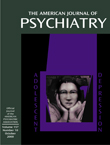Soul Murder Revisited: Thoughts About Therapy, Hate, Love, and Memory
None of the prevailing points of view on trauma suffices to give the clinician a complete understanding of the effects of child abuse. Each of the major vantage points in contemporary thinking about trauma has major strengths and substantial shortcomings. Trauma research gives us an overall perspective on the nature of trauma, the phenomenology of resulting pathology, and the course of the ensuing posttraumatic disturbance but does not, as a methodology in itself, show us the soul of the trauma sufferer or the intricacies of sustained psychotherapeutic treatment, concerns that are often tangential to the major interests of systematic researchers. Clinicians closest to the immediate treatment situation, who often know the most about the predicament and the sufferings of the trauma sufferer, are usually faced with overwhelming clinical responsibility. Often they have positions whose scope is confined to triage and brief treatment rather than sustained follow-up and thoroughgoing psychotherapeutic treatment. Accordingly, these clinicians—those who staff emergency rooms, work with family service agencies, or work in the context of recovery programs—often have neither the mandate nor the resources to provide sustained and in-depth psychotherapeutic treatment to the traumatized patient. Psychoanalysts, whose training and expertise fit them well to do in-depth and sustained psychological treatment, are mostly in private practice without direct access to the trauma patient and often ignorant of the advances in our understanding of trauma provided by trauma research. The clinician-reader, therefore, is for the most part on his or her own in developing a synthesis from points of view, each incomplete in itself, that may be integrated into a balanced, in-depth approach to the trauma patient.
Leonard Shengold’s contribution is psychoanalytic. He is, in the best sense of the word, a classical psychoanalyst—disciplined, comprehensive, sensitive to many rather than to one type of dynamic, and open-minded in his observations on psychopathology and the treatment process. Furthermore, he is a lucid writer and a brilliant stylist, able to capture the vividness of the psychoanalytic “moment” and place it in a larger perspective. For those within the field of psychoanalysis, Shengold is a well-known figure who has been recognized as a beacon light of psychoanalytic understanding through his vivid and important contributions to the field for more than three decades. Shengold is a literary man as well, not only a gifted writer but also a man of letters, the pages of whose prose are full of literary erudition pointing both to the treatment of trauma in literature and to the traumatic biographies of great literary figures.
Soul Murder Revisited is not intended to be a systematic treatise on the trauma imposed by child abuse. Rather, it is a collection of essays divided into four parts. It does not purport to be a thorough synthesis even from a psychoanalytic point of view but presents a series of vivid portraits, each adding to an overall picture drawn from the work of a master psychoanalyst doing psychoanalytic work with survivors of childhood trauma. The designation “soul murder,” a particularly useful term in my opinion, comes from Ibsen’s John Gabriel Borkman.
The first section, Perspectives on Soul Murder, contains a series of vivid essays on topics ranging from Euripides’ Medea as a soul-murdering mother, to “the smell of semen,” to an intimate portrait of the little “concentration camps” that constitute the intrafamilial world of the abused child. Shengold takes a good deal of liberty with his literary texts, but to very good advantage, in illustrating the issues in traumatogenesis and self-deception that he is trying to emphasize. The second section deals with Marcel Proust and Sigmund Freud. Shengold’s updating and revising of Freud’s writings on trauma preserve wonderfully what is of value in Freud, shaping those insights to accommodate what has been learned in the decades since their publication. The third section consists of essays on the writers Algernon Swinburne and Elizabeth Bishop. I found these essays of intrinsic interest but less convincing and less to the point than the rest of the book. The final section, Did It Really Happen? presents a thoroughly excellent and wonderfully balanced synthesis of clinical understanding of external trauma and internal fantasy that is reactive to or coexistent with such trauma. The two chapters and appendix that constitute this final section might be read with great profit by anyone in the mental health field or anyone concerned with social services or policy in our discipline.
Clinicians who are close in orientation to trauma research or are exclusively interested in biological psychiatry will have to suspend disbelief in methods that go beyond pharmacological and brief psychotherapeutic interventions in order to appreciate this book. Those at the frontlines of treatment situations in emergency rooms, child protective services, and family service agencies will probably have an easier time extending their knowledge of the clinical phenomenology of trauma into the depth psychological territory so vividly put forward in the book. The psychoanalyst, especially one with a literary bent, likely will find these essays profoundly insightful and clinically masterful.
Overall, Soul Murder Revisited is a superb contribution to the field of childhood abuse but will demand that the clinician’s clinical horse both be led to psychoanalytic water and drink deeply.



